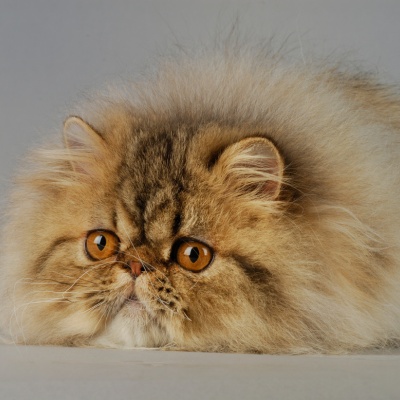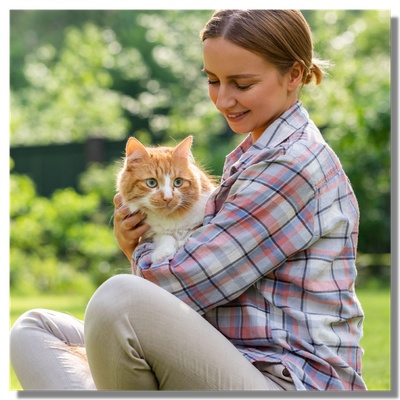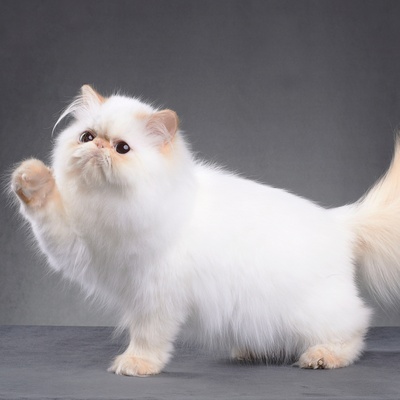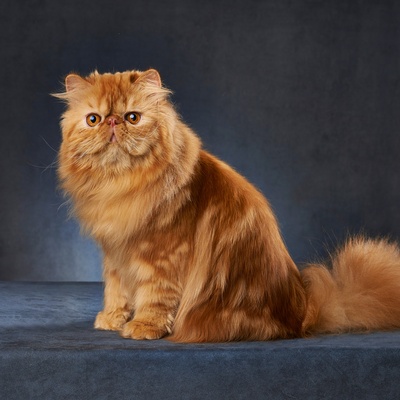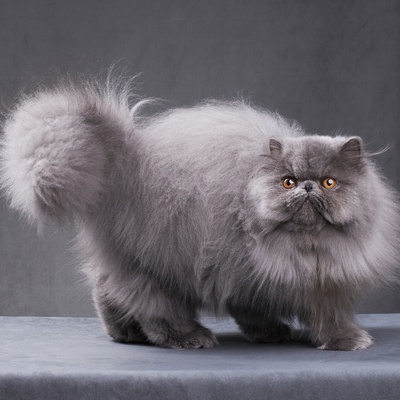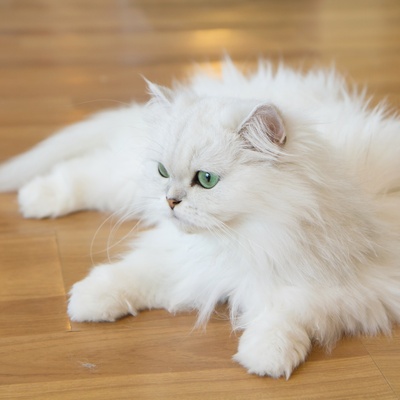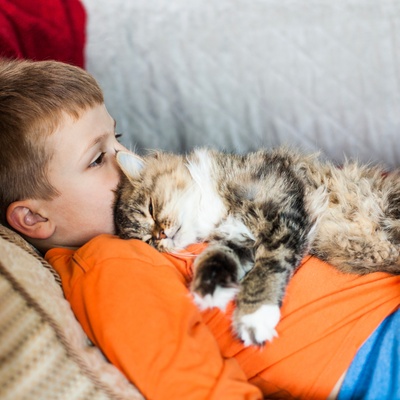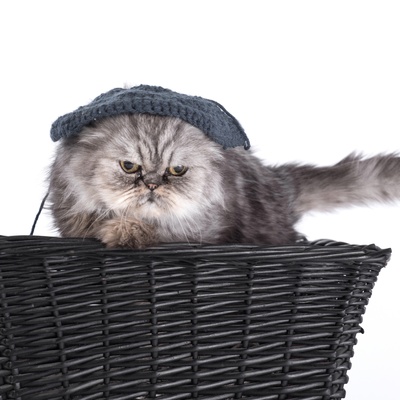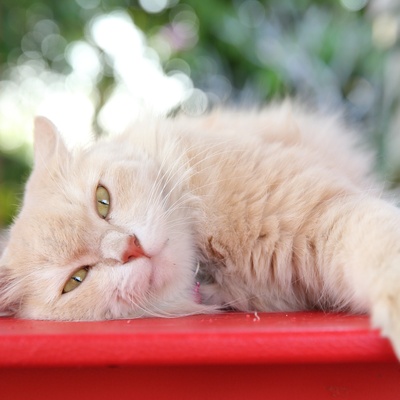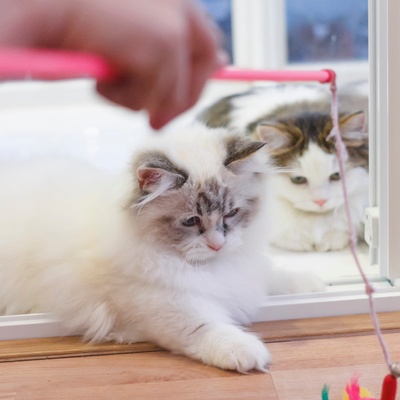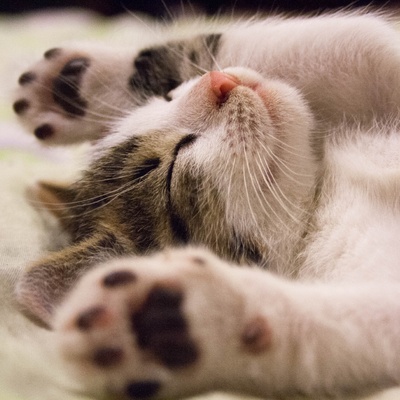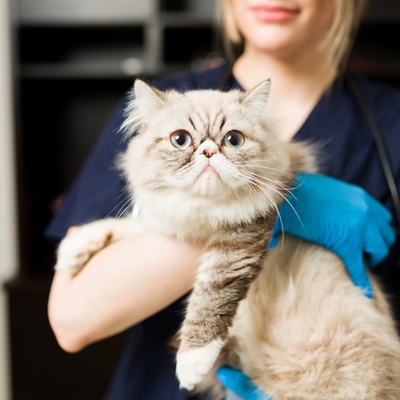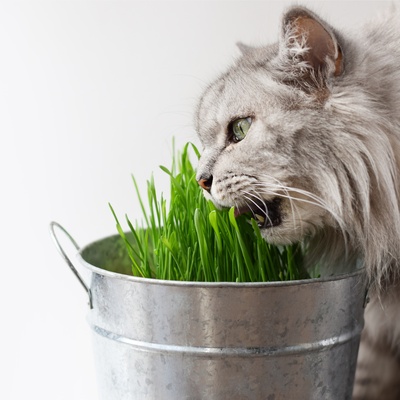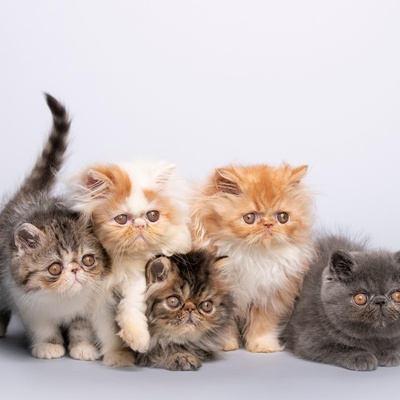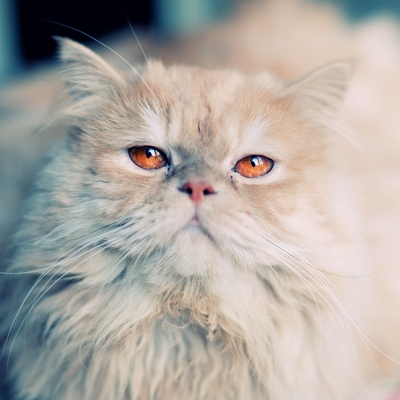Introducing the Persian
Find out everything you need to know about the Persian: its characteristics, its behaviour, its training and how much one costs.
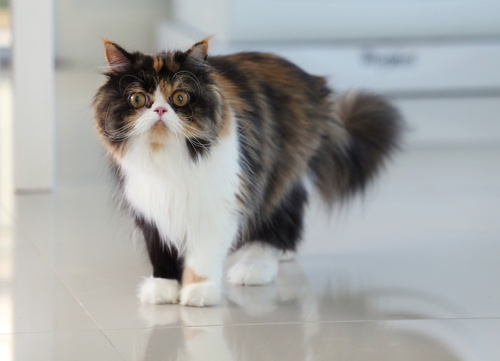
Find out everything you need to know about the Persian: its characteristics, its behaviour, its training and how much one costs.
The Persian cat stands as a paragon of feline grace and splendor. Hailing originally from the lush valleys of Iran, these aristocratic creatures have graced the laps of royalty and have been cherished companions throughout history. With their luscious, flowing coats and pansy-like faces, Persians are the epitome of a 'fluffy cat'—a feature that demands consistent grooming.
Far from their wild ancestors, Persians have adopted a serene and gentle demeanor, often described as living room ornaments, yet they encapsulate an enchanting spirit that enlivens any home. Despite their calm appearance, they do enjoy interactive play, preferring the subtle allure of a feathered toy over the boisterous antics of their feline counterparts. Bringing a Persian cat into your fold promises a touch of opulence and an abundance of joy.
This selection outlines the unique features of the Persian breed of cat.
Persians are a medium to large breed, typically ranging from 10 to 15 inches in height and weighing between 7 and 12 pounds.
The Persian boasts a long, luxurious coat that is dense and full, enveloping them in a halo of softness.
Persians are not considered hypoallergenic and may not be the best choice for individuals with allergies.
Persians' coats come in a variety of hues, with the dominant shades being white, silver, and golden, often presenting in solid, shaded, and smoke patterns.
The serene Persian thrives in a tranquil indoor setting, making them perfect for a quiet and cozy home life.
Known for their sweet and placid nature, Persians generally enjoy the company of gentle children and can coexist with other pets.
While Persians are known for their overall good health, they can be prone to breed-specific issues such as respiratory and dental problems.
Persians, with their docile and calm disposition, can be responsive to training that incorporates gentle guidance and patience.
We can help you!
Every cat has its own character and specific needs. Making the right choice will ensure his well-being and yours.
Thanks to our quiz, you'll know which breed is right for you, depending on your lifestyle, expectations and many other criteria.
Don't wait any longer and take the quiz to find out the answer!
The Persian is renowned for its long, flowing coat, which drapes it like the robes of royalty.
The Persian is a medium to large-sized feline, often noted for its imposing presence. Males typically outweigh females, with the former ranging between 9 to 14 pounds and the latter between 7 to 11 pounds. Persians reach their regal fullness around 3-4 years, maturing gracefully with a sturdy frame, substantial bone structure, and a luxuriously long tail that complements their noble bearing.
The Persian cat boasts a luxuriant, long, and full coat, enveloping it in a halo of fluff. The hair is fine, thick, and can display waves, particularly around the majestic collar area, which is known as the "ruff," as well as in the glorious tufts between its toes and the bushy "plume" of its tail. The persian cat is not considered as an hypoallergenic cat.
Persians are available in an enchanting variety of colours and patterns, from solids like pristine white, rich black, and deep blues to varied shades such as silvers, golds, and creams. Not to forget the intricately patterned tortoiseshells, the sleek and elegant shaded varieties, and the eye-catching bi-colours that add to their sophisticated allure.
The Persian is a cat of noble bearing and aristocratic demeanor, distinguished by its unique and luxurious features. It possesses a deliberate gait that showcases its robust frame and dense bone structure. This breed has small ears with rounded tips, which are set wide apart and low on the head, giving it a gentle, sweet expression.
The body of a Persian is short but sturdy with a well-muscled form, exuding a soft, rolling contour. The Persian's muzzle is famously brachycephalic, meaning it has a broad, flat profile and a snub nose. Its large, round, and expressive eyes come in striking hues such as deep copper, bright blue, and even one of each — a condition known as heterochromia. These features combine to make the Persian instantly recognizable and highly sought after for its distinct appearance.
Due to their opulent, long coats, Persians require daily brushing to prevent tangles and matting. This daily ritual becomes even more crucial during the shedding seasons, when their luxurious fur can be prone to additional shedding. Bathing a Persian is advised to be a monthly affair, using a feline-friendly shampoo, ensuring their coat remains lustrous and skin healthy.
While Persians are fastidious self-groomers, their dense fur can benefit from a warm bath to remove excess oil and debris, which can be particularly rewarding for both the cat and its human companions.
Persians are known for their gentle and serene disposition, epitomizing tranquility in the feline world.
The Persian cat exudes an air of aristocratic composure, often described as calm, and amiable, making them excellent companions. They cherish human presence, forming deep bonds with their owners and frequently following them around to share in their daily activities.
Despite their poised nature, Persians do possess a playful side, albeit their playfulness often gives way to their preference for extended periods of affection and cuddling. They communicate with soft vocalizations, including melodic purrs and quiet meows, which are heartwarming expressions of their contentment. For a Persian, an attentive owner who can provide ample affection and engagement is essential to their well-being.
Persians maintain a consistently mellow temperament, marked by their placidity and patience. This breed thrives in a harmonious household and gets along splendidly with children, dogs, and other cats, showcasing its highly sociable and adaptable nature.
When overwhelmed or in need of solitude, a Persian typically withdraws discreetly rather than displaying overt signs of distress or aggression. Their preference is to seek a quiet corner to unwind peacefully, underlining their status as paragons of feline grace and tolerance.
Persians are remarkably adaptable to various living environments, content in serene seclusion or among the soft hum of a family home. Their dependence on their owners for companionship means they thrive in settings where their human counterparts are frequently present.
Ideally, Persians prefer to lounge in a peaceful abode, where calm reigns supreme. Despite their sedate nature, they do have a penchant for playful engagement and should have ample space to explore and toys to stimulate their curiosity.
The Persian cat, with its plush coat and dignified air, often appears as if plucked from a royal portrait, serene and composed. While they enjoy interactive play that challenges their intelligence, it's important to provide them with opportunities that align with their calm demeanor.
Engaging in play with their owners not only nurtures their emotional health but also prevents the onset of ennui that could lead to mischievous behavior. Offering retreats for rest is crucial for Persians, as they need undisturbed sanctuaries to rejuvenate in peace.
Training should begin in the delicate kitten stages for Persians, as early tutelage sets the foundation for a well-adjusted feline. Patience and consistency are vital in the education of a Persian, with their training underpinned by kindness and reinforced through positive affirmation.
A steady hand and a gentle voice guide their learning, and they respond particularly well to training that involves play—turning learning into a captivating game ensures mental stimulation and the reinforcement of good habits.
Because they're highly prized and coveted, don't hesitate to equip your cat with a gps tracker for his safety and to prevent it from running away.
Choosing a cat that matches your personality and lifestyle will ensure your well-being and his!
The Persian cat epitomizes regal tranquility and robust health, thriving with regular grooming to maintain its luxurious fur.
While the Persian is usually a picture of good health, they are not strangers to breed-specific conditions such as hypertrophic cardiomyopathy and polycystic kidney disease—ailments that are unfortunately woven into their genetic tapestry.
The good news is, that advances in veterinary medicine have made it possible to conduct DNA tests to identify these conditions early, which can help in preventing the transmission of these diseases to offspring. Regular veterinary check-ups are paramount for Persians, ensuring they are protected against common feline diseases like typhus and rabies with up-to-date vaccinations.
The Persian cat is celebrated for its distinctive round face and well-muscled body. Such a grandiose coat and stocky build necessitate a premium diet to maintain their plush physique and overall health. A foundation of nutritionally rich, high-quality kibble should serve as the cornerstone of their diet.
Persians are not known for a rapid growth spurt; they reach their full size and stature by the age of 2 to 3 years. Their measured growth requires a diet that's tailored and moderated to prevent excessive weight gain during their developmental stages. Consistency is key, hence sticking to a trusted kibble brand helps ensure a continuous intake of necessary nutrients. Equally crucial is a structured feeding schedule, which aids in maintaining a stable digestive rhythm for these serene felines.
The Persian is a breed that's greatly cherished for its stunning long coat and gentle demeanor. There are many breeders specialized in Persians, given the breed's popularity. “It is important to consider a few factors before adoption
Purebred Persians are often bred by professional breeders or in catteries. Before deciding to take one home, it's advisable to visit the place where they are raised to observe their environment and ensure it is up to par.
From June 10, 2024 you must have your cat microchipped by the age of 20 weeks old and register its details in a relevant database such as Petlog or The Governing Council of the Cat Fancy (GCCF). This is a legal requirement in Britain, and failure to comply could result in a fine of
.
It's vital to verify that the Persian and its parents have undergone all the necessary health checks and DNA tests to identify possible hereditary conditions.
The cost of a Persian cat can fluctuate based on numerous factors, including but not limited to their pedigree, the breeder's reputation, and the cat's age and color. A Persian kitten's price range might span broadly, often between
and
, subject to various influences.
Remember, the investment in a Persian doesn't stop at the initial cost; their maintenance, including grooming, veterinary care, and high-quality diet, is also a significant financial consideration. The yearly upkeep for these cats can be estimated at roughly
to
. Owning a Persian is a long-term commitment to a living being that requires much love and care to thrive.
Choosing a cat that matches your personality and lifestyle will ensure your well-being and his!
To access the most relevant information, suitable payment methods, and delivery in your region, please select the website corresponding to your country.
